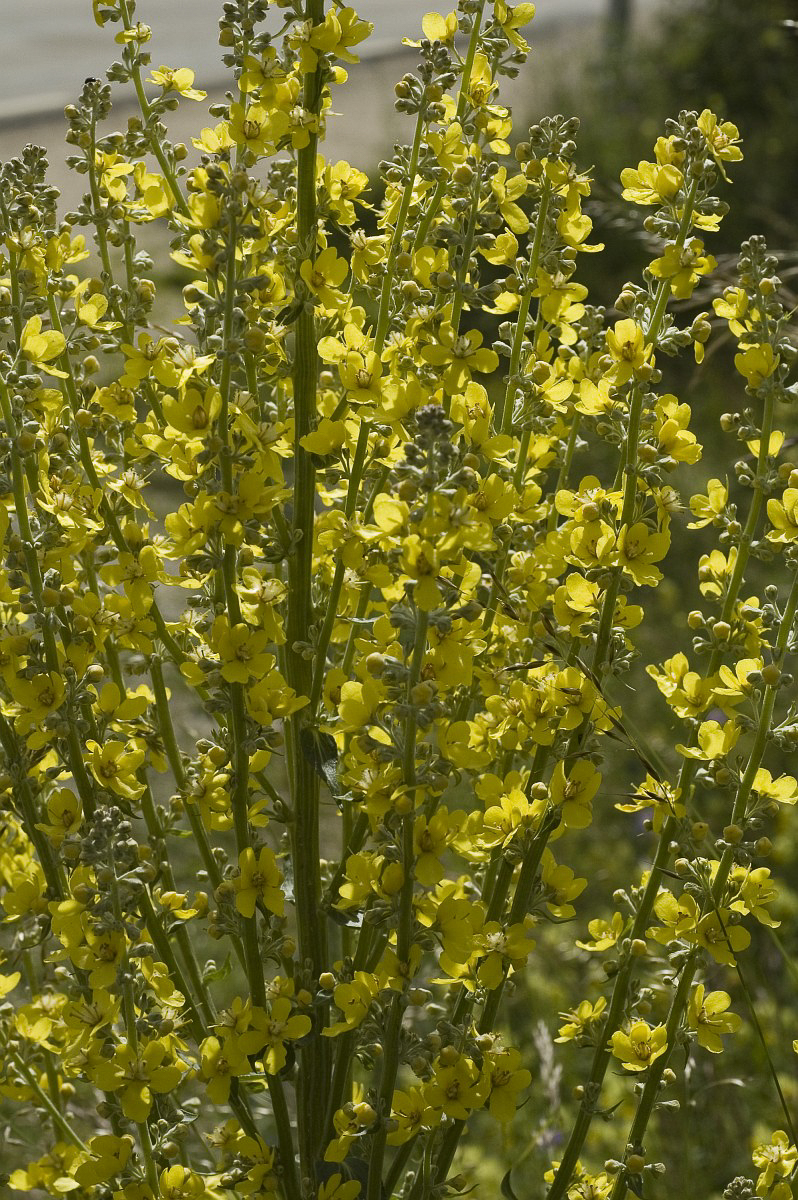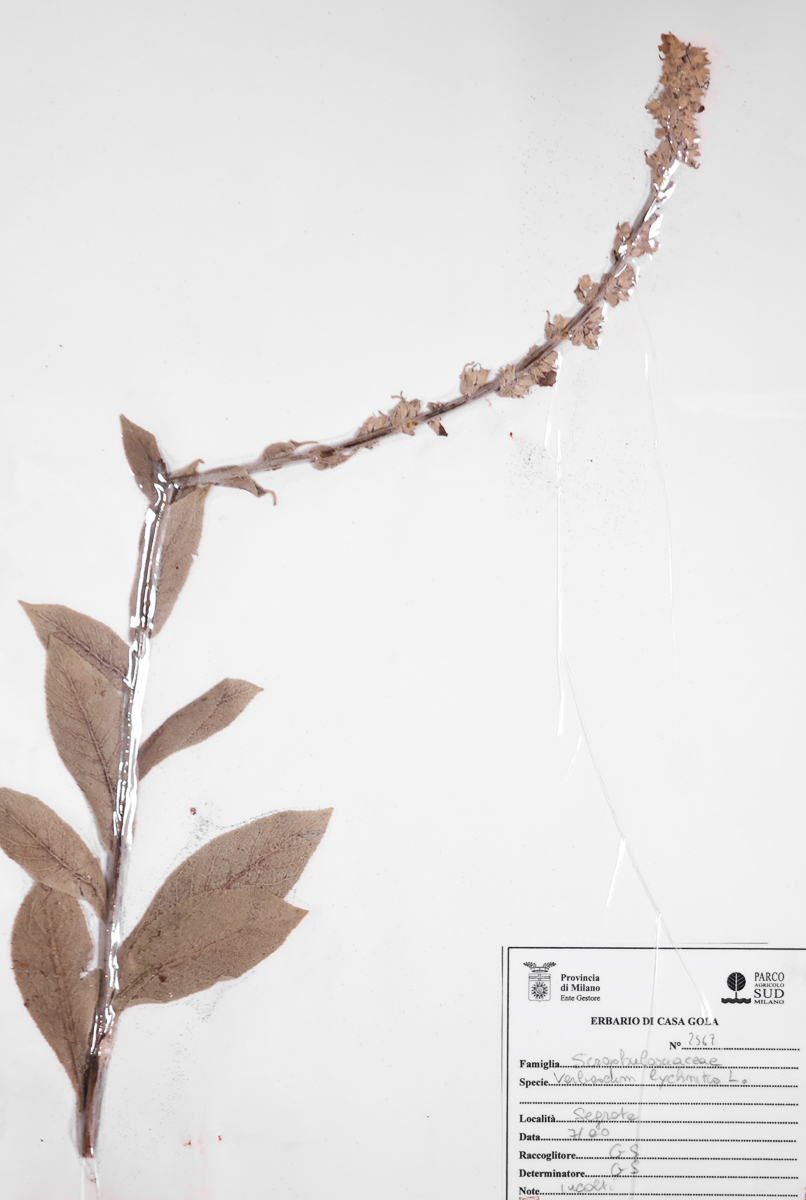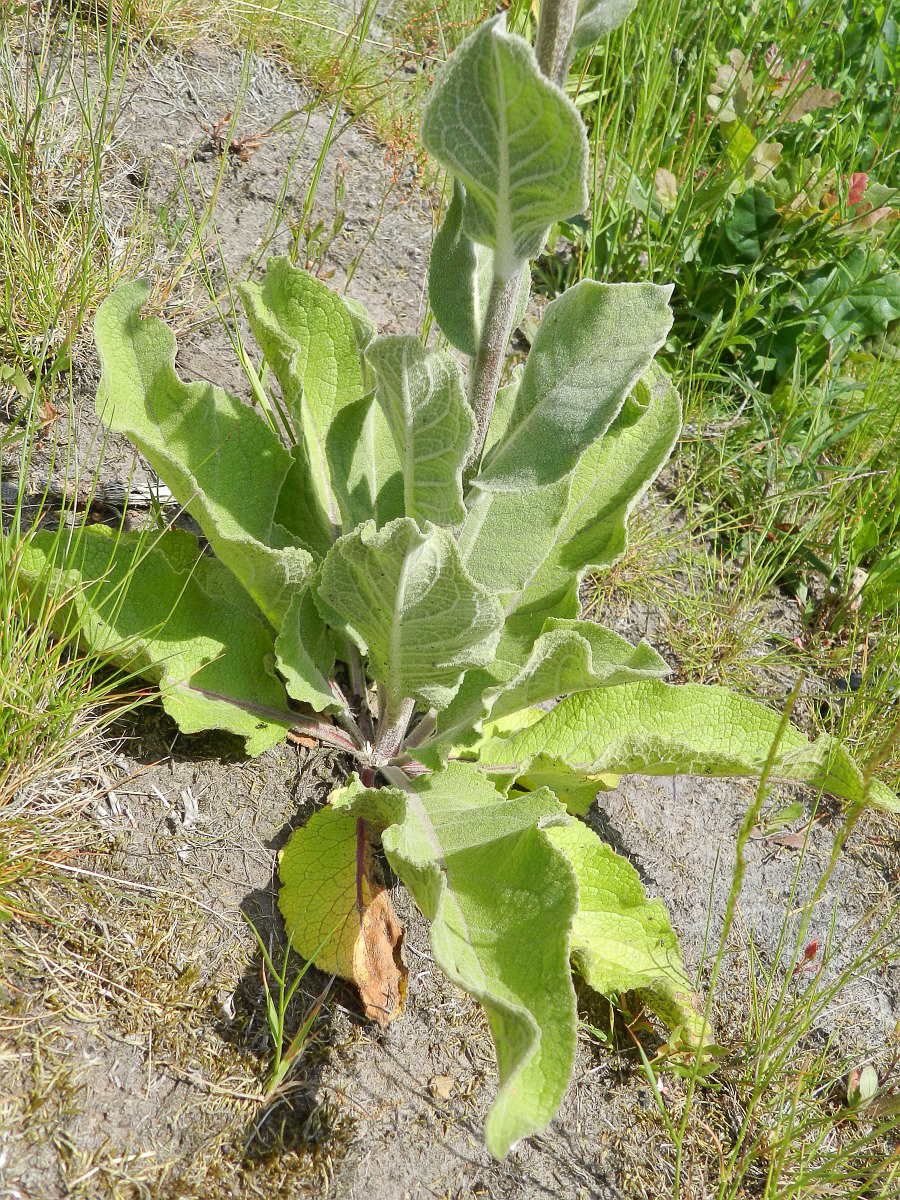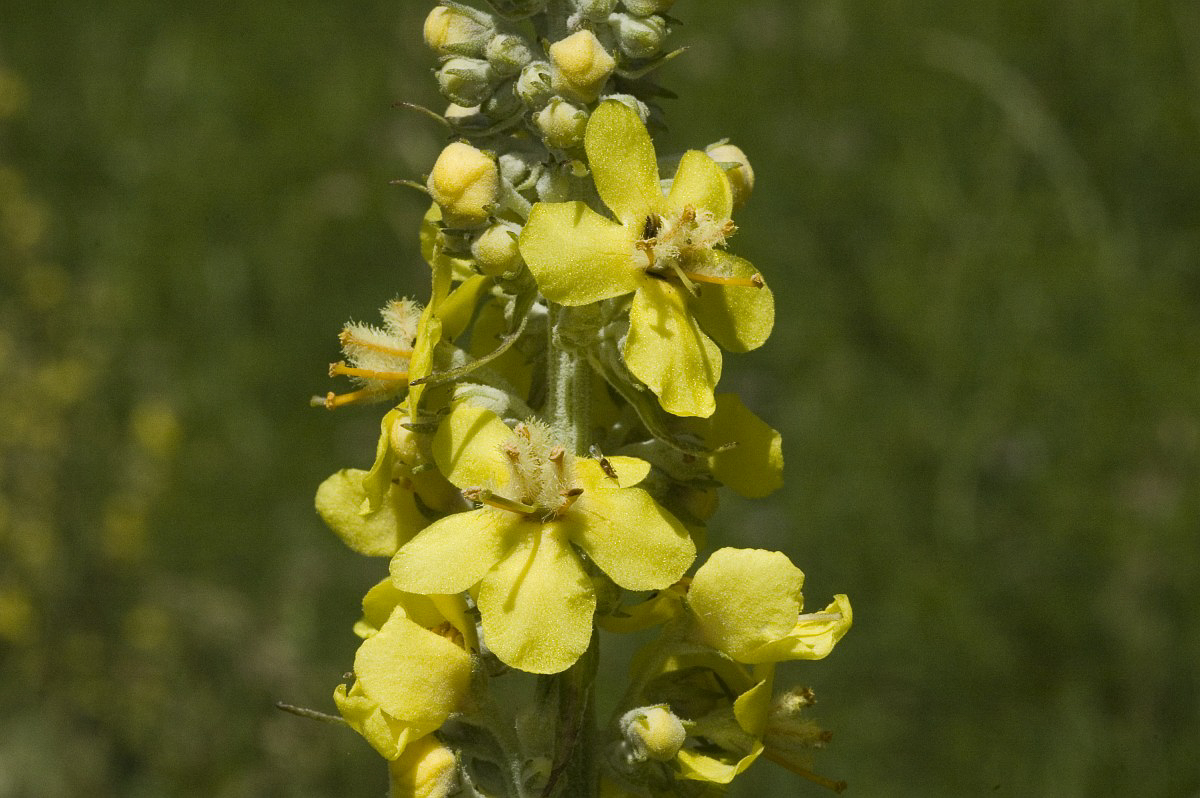Mullein
Scientific name: Verbascum lychnitis L.
Family name: Scrophulariaceae
MORPHOLOGY
Habit and dimensions: generally biennial herbaceous plant, sometimes perennial. The stem can reach up to 2 meters in height.
Stem: furrowed and angular, leafy, and branched throughout its length, especially in the upper half of the plant.
Leaves: alternate, lanceolate or elliptical, petiolate, with crenate margins. The upper side is dark green, while the lower side is white and densely hairy.
Flowers: clustered in pyramidal panicle inflorescences. Individual flowers have yellow or whitish petals and are carried by a pedicel longer than the calyx formed by the sepals. They appear between May and August.
Fruits and seeds: oval and pubescent capsules, truncated at the apex and equipped with a short beak.
DISTRIBUTION AND HABITAT
A Eurasian plant, particularly from the Caucasus. It grows in clearings of very open woods, rocky environments, or dry meadows, up to 2,000 meters above sea level. In Italy, it is found throughout the peninsula, except on the islands.
USE
Mullein has been widely used for medicinal purposes due to its soothing, emollient, and protective properties. However, the plant contains toxic principles such as saponins, found in the seeds.
INTERESTING FACTS
The specific epithet derives from the Greek “lychnos” (= lamp), as the leaves of this plant were used in the past as wicks. The species also resembles a candlestick; hence it is also called candelabra mullein.
Photo: Under the free license of Saxifraga – Rutger Barendse, Jan van der Straaten, and Marjke Verhagen.



















